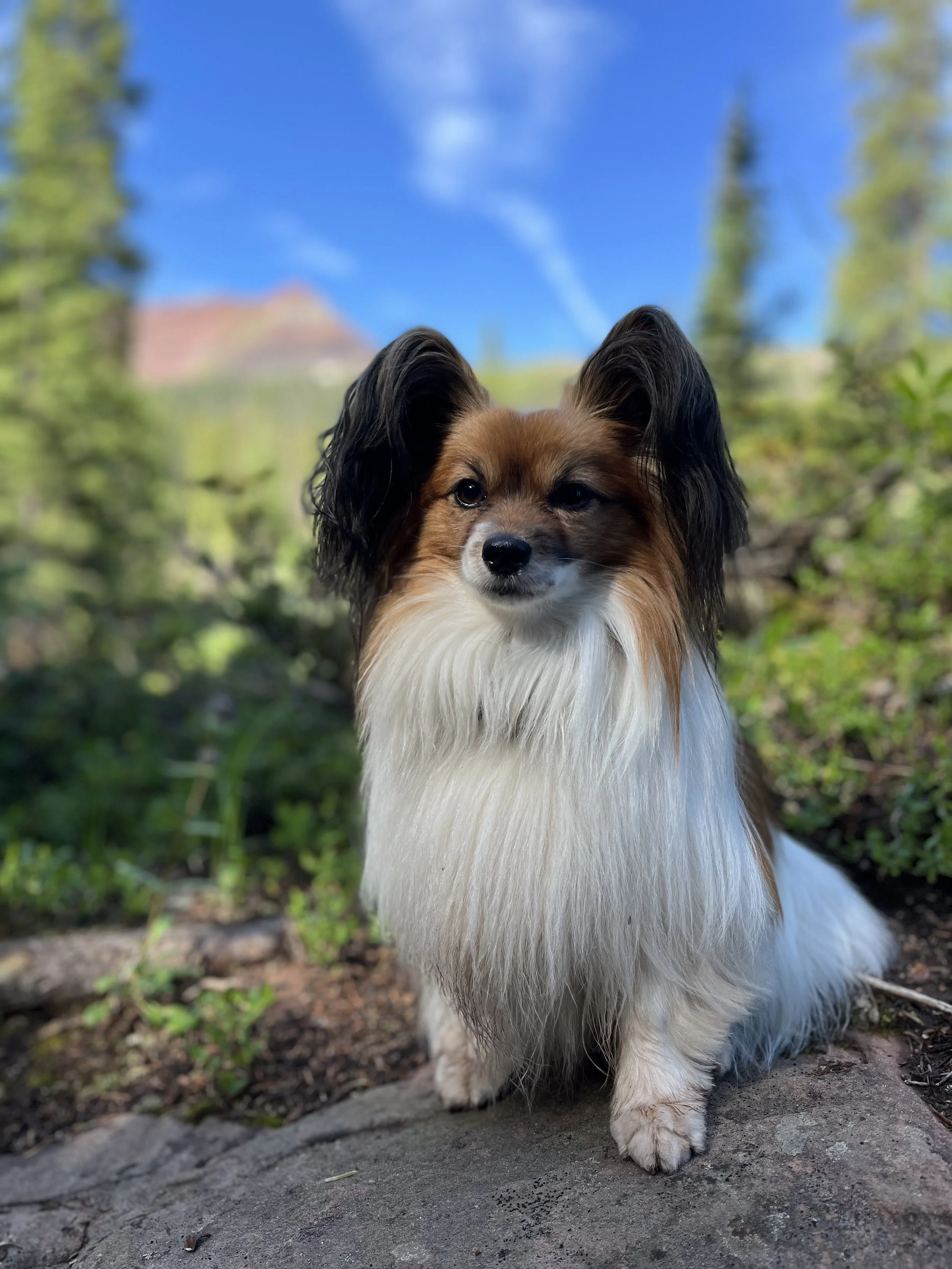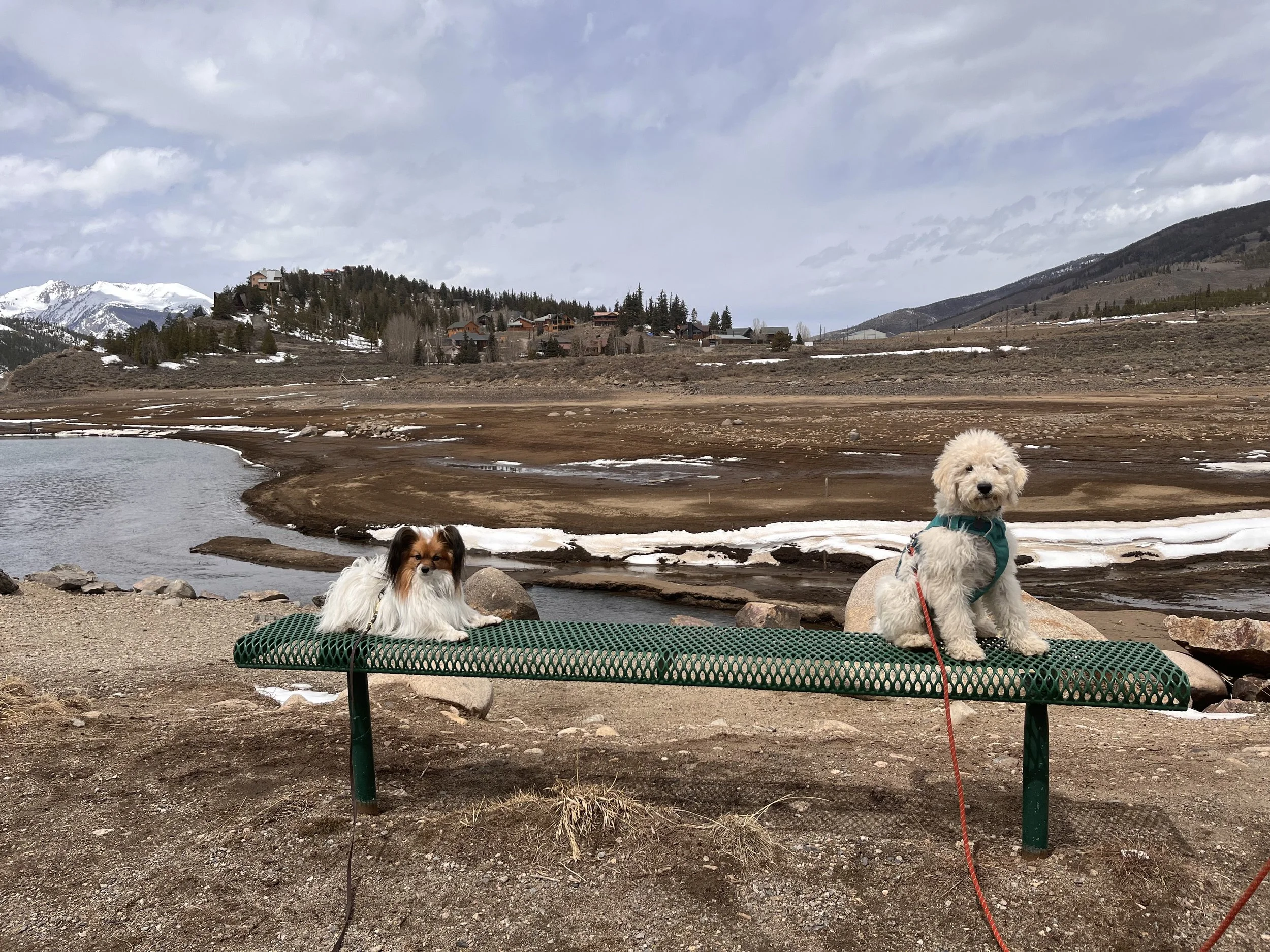Cooperative Care
By Benah Stiewing
Just like us, there are certain activities your dog has to do even though they may be difficult, or sometimes painful. For humans, we may not enjoy going to the doctor but we can rationalize why it’s worth getting poked and prodded. For our dogs, going to the vet can be terribly confusing at best and traumatizing at worst. It’s not uncommon for your normally friendly and easy-going dog to develop fear or reactivity when they visit the veterinarian. As positive-reinforcement trainers, a trip to the vet can be especially destabilizing to our dogs who are used to feeling heard and advocated for. Enter, cooperative care!
Originally started in zoos and animal parks as a way to care for and treat large, often dangerous animals, cooperative care is the method of training an animal to not only tolerate physical actions and manipulations, but to actively consent to such behaviors. This method is rooted in autonomy and the positive effects of choice. We teach our dog that they have full control over what happens to their physical body in a certain context. There are times, like an emergency medical scenario, where your dog may need to be fully restrained and sedated for a medical procedure and does not experience any autonomy, but this is entirely separate from the context of cooperative care training. You can use cooperative care training for:
Blood draws
Vaccines
Physical inspections
Nail trims
Teeth brushing
And more!
Sounds great, right? Let’s get started! First, you need to build your context of choice. You need to teach your dog how they can opt in and opt out of training by teaching your dog a stationary behavior! If you aren’t familiar with teaching that behavior, click here for an instructional video. Once you have trained your stationary behavior, we are going to use being on the mat as a way to opt-in to the training goal at hand. If your dog is on the mat, they are consenting to the behavior you are practicing. When they leave the mat, they are saying no. If at any point your dog leaves the mat during a training session, you must respect that choice and not encourage them to come back on. Remember that cooperative care is about autonomy, so it’s imperative that you honor your dog’s choices and allow them autonomy.
After building an environment of choice, cooperative care breaks down a behavior (like nail trims) into many much smaller steps. Let’s explore nail trims as an example of how cooperative care works! Below we have broken down the act of trimming a dog’s nails. Please keep in mind that this is just an example and you may need to modify the steps/progression for your own dog.
Hand moves towards dog’s head
Hand touches dog’s foot
Hand grasps dog’s foot
Hand grasps dog’s foot for 3 seconds
Hand grasps dog’s foot for 5 seconds
Hand grasps dog’s foot for 10 seconds
Go back to step 1, with the clippers present in the space (at a distance where your dog notices them but isn’t in a state of fear).
Repeat steps 1-6 with the clippers in the space.
Continue repeating steps 1-6 at each stage of the clippers moving closer to you and your dog. Once the clippers are within reach of your body, move on to step 8.
While one hand is grasping foot, the other hand picks up clippers
Hand holding clippers moves dog’s foot
Clippers touch dog’s foot
Nail is placed in the clipper
Clipper is closed around the nail
This cycle continues for each toe.
That’s a fairly complex set of behaviors, and we need to desensitize our dog to each step in that process. The general rule is 15-20 successful repetitions per step before moving on to the next. Remember, this is a general outline and you may need more or less steps depending on your dog’s overall comfortability with nail trims.
While we’ve provided a deep dive into using cooperative care for nail trims, there are so many more possibilities for this training method, like baths and haircuts! If you want to start cooperative care with your dog but aren’t sure where to begin, consider enrolling in Cooperative Care for Better Veterinary & Grooming Visits! This 3-week virtual class is bursting with information, presented through recorded lectures, written instructions, and demonstration videos. If you want additional support for you and your dog, we offer in-person Private Lessons in Fort Collins, Colorado and Chatham, New York, and virtual coaching right in the comfort of your home.
Summit Dog Training offers group dog training classes & private lessons in Fort Collins, Colorado, as well as online self-study courses & online private lessons for education on how to live the best life with your dog! If you are looking for more training support, please don’t hesitate to contact us! We’d love to help you and your dog get ready for any adventure.













